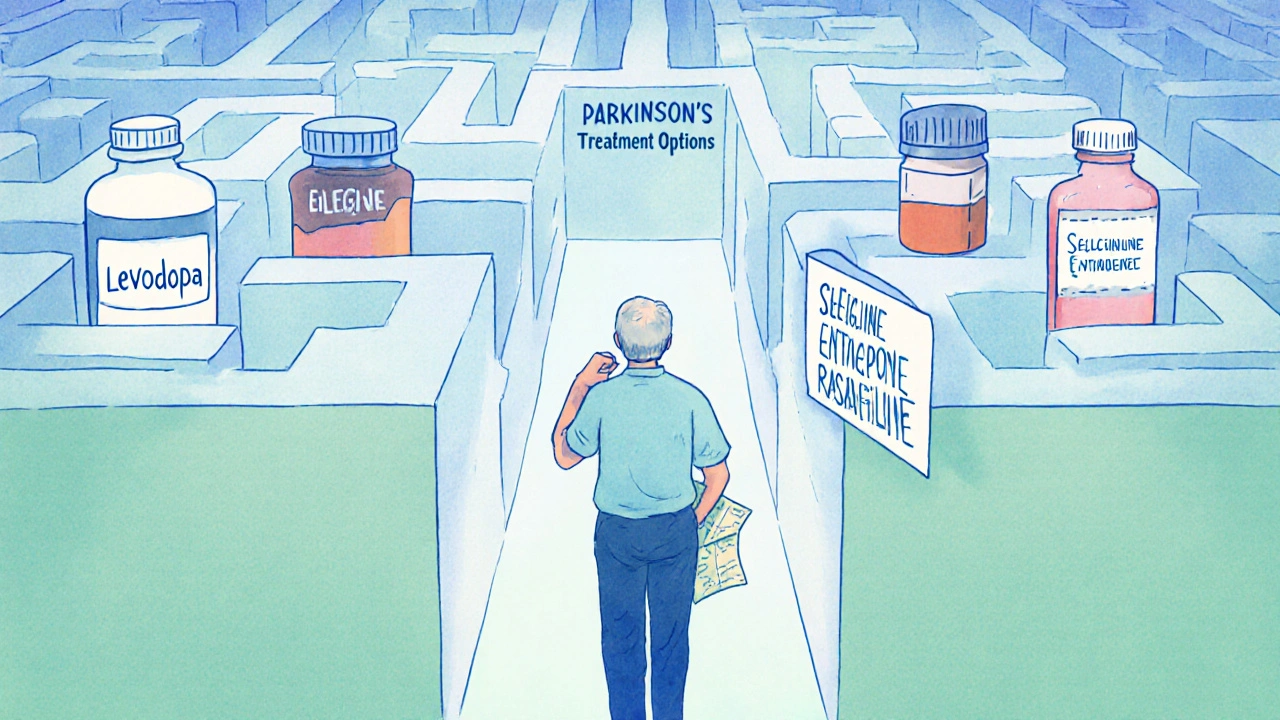MAO-B Inhibitors: How They Work and What They Treat
When working with MAO-B inhibitors, drugs that block the monoamine oxidase‑B enzyme to increase brain dopamine. Also known as monoamine oxidase‑B blockers, they are commonly prescribed for Parkinson's disease, a progressive movement disorder caused by dopamine loss and sometimes for depression, a mood condition linked to low neurotransmitter levels. A well‑known example is selegiline, an older MAO‑B inhibitor used at low doses. These agents work by preserving dopamine and reducing harmful by‑products of the enzyme.
If you're curious how MAO-B inhibitors fit into everyday treatment, think of three simple facts: they raise dopamine levels, they slow oxidative stress, and they can be combined with other Parkinson’s meds. The first fact is a direct link – blocking MAO‑B stops dopamine breakdown, which directly improves motor symptoms. The second fact ties to neuroprotection; by reducing the enzyme’s by‑products, cells face less oxidative damage. Finally, many clinicians pair MAO‑B inhibitors with levodopa, creating a synergistic effect that stretches the benefit of each drug.
Key Players and Their Profiles
Beyond selegiline, the newer drug rasagiline offers a cleaner side‑effect profile. Rasagiline binds irreversibly to MAO‑B, providing steadier dopamine levels and a once‑daily dose. Another entrant, safinamide, adds a glutamate‑modulating effect, which can help with motor fluctuations. All three share the core mechanism – MAO‑B inhibition – but differ in potency, dosing, and adjunct benefits. When choosing a therapy, doctors weigh factors like age, disease stage, and tolerance. For early‑stage Parkinson’s, a low‑dose selegiline may suffice, while advanced patients often need rasagiline or safinamide to fine‑tune symptom control.
Understanding the enzyme itself helps demystify why these drugs matter. MAO‑B is a protein that lives inside brain cells, breaking down dopamine, phenylethylamine, and certain trace amines. Its activity rises with age, which partly explains why dopamine drops in older adults. By inhibiting MAO‑B, the drugs let the brain keep more of its own dopamine instead of relying solely on external sources like levodopa. This natural boost can smooth out “on‑off” periods and reduce the need for higher levodopa doses, which often bring nausea or dyskinesia.
Safety is a big concern, especially because early MAO inhibitors hit both MAO‑A and MAO‑B, leading to dangerous food interactions. Modern MAO‑B inhibitors are selective, meaning they largely avoid the tyramine reaction that caused hypertensive crises with older drugs. Still, patients should watch for contraindications: certain antidepressants (like SSRIs) can cause serotonin syndrome when mixed with MAO‑B inhibitors, and some over‑the‑counter cough medicines contain dextromethorphan, which also interacts. Regular check‑ups and clear communication with the prescribing doctor keep risks low.
Beyond Parkinson’s and depression, researchers are probing MAO‑B inhibitors for other uses. Early studies suggest they might help with restless‑leg syndrome by balancing dopamine, and there’s growing interest in their potential neuroprotective role for Alzheimer’s disease. While evidence is still emerging, the shared theme is that preserving dopamine and reducing oxidative stress can benefit several brain disorders. Keeping an eye on clinical trials will show whether these clues turn into approved therapies.
All this information sets the stage for the articles below. Whether you’re looking for dosing tips, side‑effect management, or a deeper dive into specific drugs like rasagiline, the collection gives practical guidance you can apply right away. Browse the list to find the exact angle you need, and you’ll walk away with a clearer picture of how MAO‑B inhibitors fit into modern treatment plans.
Azilect (Rasagiline) vs Other Parkinson's Drugs - In‑Depth Comparison
- Laura Ledas
- Oct, 20 2025
A detailed, easy‑to‑read comparison of Azilect (Rasagiline) with other Parkinson's drugs, covering effectiveness, side effects, dosing, cost and best‑use scenarios.
Learn More